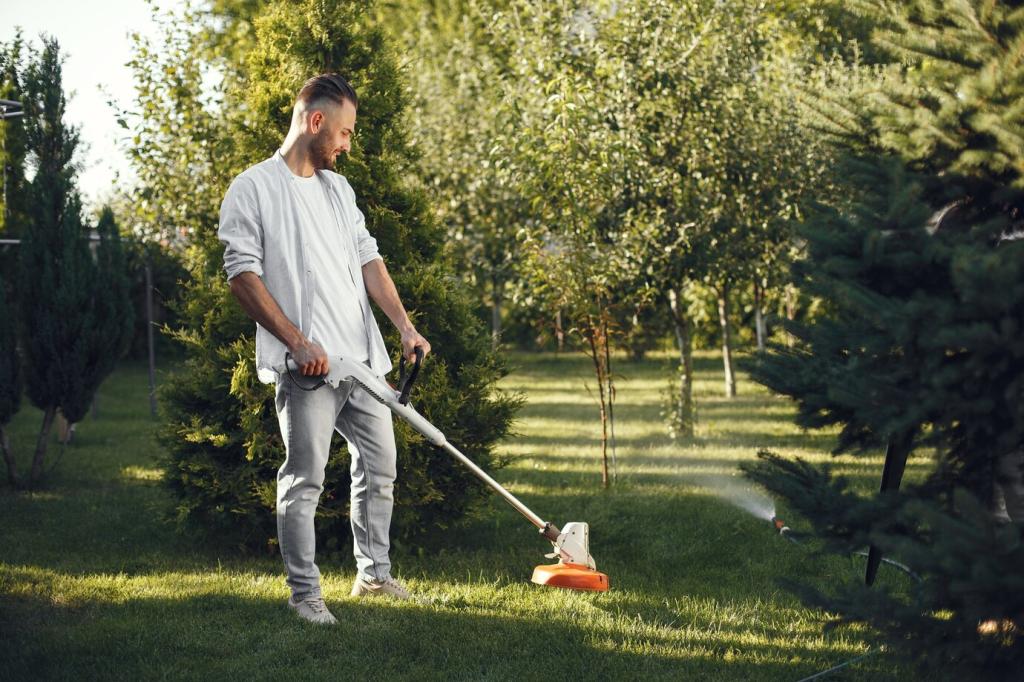Shine Naturally: DIY Eco-Friendly Furniture Polish Recipes
Chosen theme: DIY Eco-Friendly Furniture Polish Recipes. Welcome to a cozy corner where wood glows, air stays fresh, and your creativity takes the lead. Learn simple, sustainable recipes and techniques, and join our community by sharing your favorite blends and subscribing for new ideas.

Why DIY Eco-Friendly Furniture Polish Matters
Many commercial polishes rely on petroleum solvents and synthetic fragrances that emit volatile organic compounds. With plant oils, waxes, and simple pantry acids, you can minimize VOCs, improve indoor air quality, and control every ingredient that touches your favorite wood surfaces.

Ingredients That Respect Your Home and Planet
Jojoba resists rancidity and mimics natural wood oils. Fractionated coconut stays liquid and light. Olive conditions well but can be heavier. Grapeseed is fast absorbing yet less stable. Pick an oil for your climate, storage habits, and the finish you are protecting.
Ingredients That Respect Your Home and Planet
Beeswax gives a warm, soft glow and easy buffing. Candelilla and carnauba are vegan options with higher melt points and brighter shine. Blending a little carnauba into beeswax increases durability without feeling plasticky or overly slick on frequently touched surfaces.
Ingredients That Respect Your Home and Planet
A few drops of lemon, sweet orange, or lavender essential oil add uplifting aroma, but keep total dilution low. White vinegar assists light cleaning on sealed wood. A dash of liquid castile soap helps emulsify spray recipes and reduce streaks during quick wipe-downs.
Three Tried-and-True DIY Polish Recipes
Combine one cup distilled water, one tablespoon white vinegar, one teaspoon jojoba oil, and half a teaspoon liquid castile soap. Add five drops sweet orange essential oil if desired. Shake before each use, mist lightly on cloth, then wipe and buff along the grain.

Three Tried-and-True DIY Polish Recipes
Melt two tablespoons beeswax or candelilla with six tablespoons olive or jojoba in a double boiler. Remove from heat, stir until creamy, and add four to six drops essential oil. Cool, label, patch test, then massage a pea-sized amount into wood and buff thoroughly.
Application, Buffing, And Finish Care
Cloths, Pressure, And The Grain
Use lint-free cotton or microfiber for even coverage. Work with the grain using light pressure, adding product gradually to prevent buildup. Finish with a clean, dry cloth and brisk buffing strokes that warm the waxes just enough to level and shine.
Know Your Finish Before You Polish
Sealed finishes like polyurethane tolerate light vinegar in sprays; oiled or waxed finishes prefer oil and wax blends only. Unfinished wood absorbs quickly, so apply sparingly. Always patch test in an inconspicuous spot and space sessions weeks apart to avoid saturation.
A Little Story To Inspire
When my neighbor rescued a maple coffee table from a curb, a simple jojoba and beeswax balm lifted grayness from the surface. The grain brightened, scratches softened, and Saturday mornings suddenly felt like a ritual. Share your rescue story and inspire another reader.
Safety, Storage, And Shelf Life
Label, Date, And Store Wisely
Use amber glass jars or tins, note the recipe and date, and store in a cool, dark place. Water-based sprays are best within two to three weeks, especially refrigerated. Oil-and-wax pastes often last six to twelve months; discard if odor turns sharp.
Allergies And Pet Considerations
Keep essential oils minimal and avoid nut oils if sensitivities exist. Citrus oils can be irritating in high concentrations. Skip scented blends on pet-accessible surfaces and toys, and avoid overspray on food-prep areas unless every ingredient is truly food-safe.
Eco Habits That Add Up
Repurpose glass jars, refill spray bottles, and wash cloths for reuse. Compost lemon peels after zesting for aromatic infusions. Little routines reduce waste and costs while keeping your toolkit consistent. Post your favorite reuse hack to help the next reader begin.
Troubleshooting And Community Q&A
Streaks Or Cloudiness
Streaks usually mean too much product or hard water. Switch to distilled water, add a touch more castile soap in sprays, and buff longer with a dry cloth. Reduce oil content slightly if haze persists on glossy, high-reflective finishes.
Sticky Residue And Dust Attraction
If surfaces feel tacky, your wax ratio may be high or buffing too light. Decrease wax a little, apply thinner coats, and extend buffing time. Always dust first, because trapped particles create drag and attract more debris after polishing.
Odors, Stains, And Overspray
A painty or sour smell signals rancidity; prefer stable oils like jojoba. Avoid vinegar overspray on stone or shellac finishes. For accidental darkening on raw wood, let the area rest, then gently rebuff and switch to a lighter oil-only approach.
